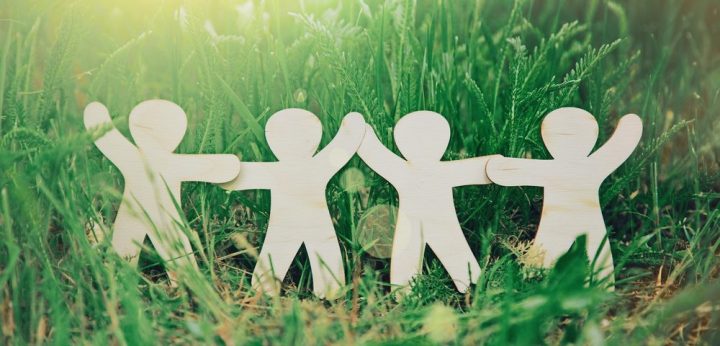My son Brian’s class photos are always great. He doesn’t normally respond to any verbal instructions, so getting him to sit still, look at the camera, and smile willingly is pretty much impossible. Yet somehow, while also assisting Brian’s other classmates, his teachers are always able to capture that perfect moment.
Already at least 6 inches taller than his friends, Brian’s adorable little smile is beaming through his protective face shield. He’s the only one wearing a hockey helmet for picture day.
Brian started experiencing drop seizures at age 2. Prior to that, he would have clusters of about 20 or so little seizures several times a day. Brian would tense up for a second, then ease up. Then he’d tense up again, and again he’d ease up.
My wife, Jendi, and I would try to get him seated during the seizure clusters, holding him close while the cluster ran its course for several minutes. If Brian was on his feet during the onset of a seizure cluster, he’d usually be able to remain standing until Jendi or I got him seated and comfortable. After the cluster finally subsided, Brian normally would nap for a bit.
It was unsettling, but at that time, we allowed Brian to roam and play normally, like any other 2-year-old. As long as we were nearby when the clusters started, the work involved in keeping him safe was the same as it would normally be for any 2-year-old.
The drop seizures started to cause Brian to fall on his bottom. Unlike clusters of little, milder seizures, the drop seizures would cause Brian’s upper body to jerk forward, and his legs to go limp. There would be no warning signs, no way to guess when it would happen.
Brian’s first seizure injury happened when he smacked his forehead on the TV stand while watching cartoons. It left a knot the size of a quarter right between his eyes. Uh-oh, our normal routine just instantly changed.
Jendi and I were aware that injuries from drop seizures were common in Lennox-Gastaut syndrome patients, and we’ve seen the helmets online that some epilepsy patients wear. Our son wouldn’t need that, would he? We can just be extra careful with him, follow him around, and be ready to catch him when a drop seizure happens. Our reflexes are quick enough. We can “seizure-proof” our home and get rid of anything that has edges and pad everything!
Our reflexes were not fast enough, and seizure-proofing the entire world was impossible. A few bumps and bruises later, we acknowledged the inevitable and settled on a hockey helmet with a full, clear face shield.
We started with just the helmet, but Brian was still hitting his mouth and chin on things on the way down to the ground. So, the full face shield was necessary. It’s as close to full protection as we’ve been able to find, and Brian’s been wearing it for the past three years. Whether we’re at the playground or in the grocery store, Brian is always the only “kid in the helmet.”
We normally get plenty of confused looks and questions. He tends to stick out like a wonderfully adorable sore thumb, and I absolutely don’t mind explaining the situation if asked.
Thankfully, after adjusting some medications, Brian hasn’t suffered a drop seizure in about three months. Because they happen so fast and can happen at any time, he still wears his helmet out of an abundance of caution. All it takes is one seizure at the wrong place and into the wrong object.
Maybe one day, we can be confident that Brian won’t need his helmet anymore. I would love nothing more. Unless he’s miraculously fully cured though, Brian will continue being “the kid in the helmet” for the foreseeable future.
Over the last few months, however, we haven’t gotten any confused looks or curious inquiries. Bringing Brian out in public with his helmet isn’t as attention-getting anymore. Face coverings are now the norm. How strange!
Instead of puzzled looks and inquiries, Brian gets only compliments now. “Great mask, buddy!” “I need one like that, I can’t breathe in mine!” “What a clever way to cover his face!”
It’s been quite the experience to see a societal shift in what’s considered “normal” out in public. Instead of catching the eye of everyone we walk past, Brian has been fitting right in during these strange times. While he’s still the “kid in the helmet,” there’s also now the “guy wearing a morph suit,” and the “lady with the fancy scarf and goggles,” among others. People are just now growing accustomed to covering their faces all day, but this has been Brian’s routine for years. Nothing out of the norm for him!
***
Note: Lennox-Gastaut Syndrome News is strictly a news and information website about the disease. It does not provide medical advice, diagnosis, or treatment. This content is not intended to be a substitute for professional medical advice, diagnosis, or treatment. Always seek the advice of your physician or other qualified health provider with any questions you may have regarding a medical condition. Never disregard professional medical advice or delay in seeking it because of something you have read on this website. The opinions expressed in this column are not those of Lennox-Gastaut Syndrome News or its parent company, BioNews Services, and are intended to spark discussion about issues pertaining to Lennox-Gastaut syndrome.

